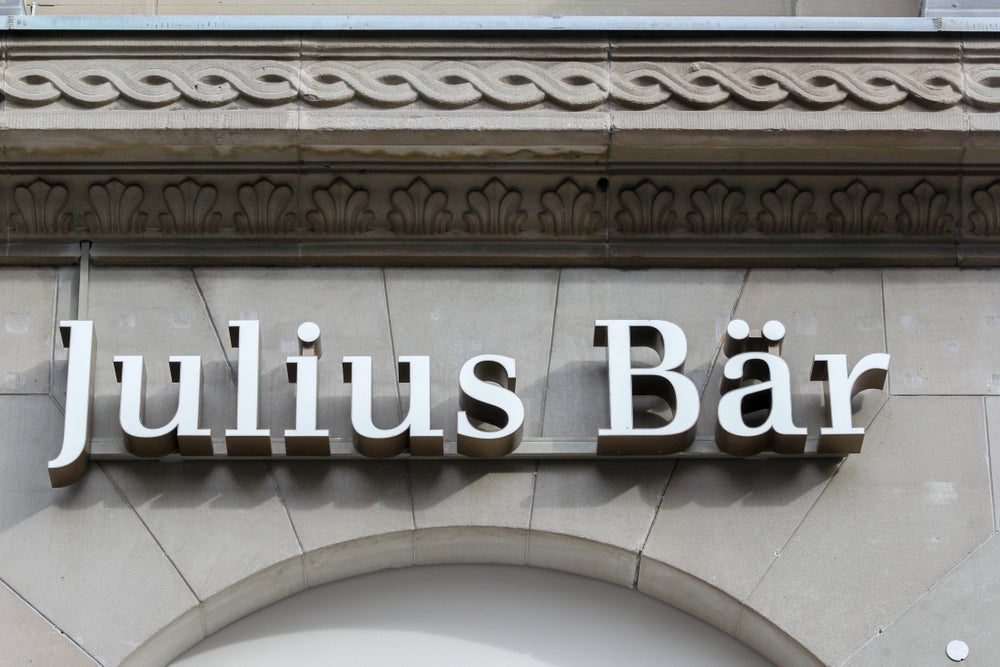buoyed by strong economic growth and a private banking market
characterised by high levels of M&A activity, is now set for a
period of reassessment as wealth managers look to carve a niche for
themselves in a marketplace that has turned distinctly less
bullish. Dan Jones reports.
Fundamentals for the wealth industry across the low countries
remain strong. Datamonitor estimates that onshore liquid assets in
Belgium and the Netherlands will grow from €667 billion ($1
trillion) in 2005 to €902 billion by 2010, while private banking in
Luxembourg provides some six percent of the country’s GDP. But
while one private banker in the region acknowledges that “cash is
king for the moment” as markets turn less bullish, new legislation
is likely to have a say in who emerges with the lion’s share of
future wealth.
The growth cycle may have peaked, but the industry sees new
regulation as one means of propelling the market in 2008. Much as a
tax amnesty, introduced by the Belgian ministry of finance on a
temporary basis in 2004 before being made permanent two years
later, helped accumulate assets for the onshore private banks, so
too is new legislation abolishing bearer securities expected to be
a boon for wealth managers. The dematerialisation of shares came
into effect for new shares on 1 January 2008, and will render all
existing bearer shares effectively useless from 31 December 2013
onwards.
Unsurprisingly, for private banks the opportunity to hoover up
assets previously held outside the banking system has not gone
unnoticed. “A lot of banks will focus on taking in these stocks and
bonds. That could still lead to another round of growth in the
market,” says Jan de Coninck, CEO of SG Private Banking
Belgium.
The market in Belgium remains dominated by a mix of Benelux
universal banks such as ING and Fortis, local independents such as
Degroof and Delen, and big boys from outside the region such as UBS
and BNP Paribas. Yet metrics remain murky – some private bankers
freely admit to having “no idea” of the total size of the Belgian
market, for example. Others suggest that wealth managers in the
country have around €100 billion in assets under management (AuM).
But even this figure conceals a degree of market share controversy,
with industry figures unable to reach agreement as to their
respective standings in AuM league tables.
What is clear is that whether at the top of the cycle or otherwise,
Belgium continues to attract interest from a wide variety of
private banks. The past year has seen Dresdner enter the market via
the acquisition of two local wealth managers, Van Moer Santerre and
Damien Courtens. The two are estimated to have 3,000 customers and
€500 million of assets under management between them.
How well do you really know your competitors?
Access the most comprehensive Company Profiles on the market, powered by GlobalData. Save hours of research. Gain competitive edge.

Thank you!
Your download email will arrive shortly
Not ready to buy yet? Download a free sample
We are confident about the unique quality of our Company Profiles. However, we want you to make the most beneficial decision for your business, so we offer a free sample that you can download by submitting the below form
By GlobalDataThe German bank joins existing foreign players such as UBS, Société
Générale and BNP Paribas, though domestic players with strong
retail arms remain confident of their strengths. “We see a lot of
new entrants to the market – the Swiss for example – but they lack
the distribution capacity of the domestic big banks,” says Bernard
Coucke, head of Private Banking Europe at ING.
Gaining ground
ING sees itself as gaining ground on its competitors thanks to a
more carefully defined wealth offering. “We are getting bigger
customers – we have become more mature as a private bank and are
very strong with clients [who have] between one and five million
euros,” Coucke comments. “We started to organise much later than
our competitors, but we are catching up quickly.”
Coucke asserts that the ING private bank is third in terms of
Belgian market share, behind Degroof and the wealth operations of
bancassurance group KBC.
The extent to which ING has caught up remains hard to quantify,
however. Coucke believes it is “too early to start using figures
metrics as a benchmark”, pointing to a propensity for double
counting asset management and client asset figures as well as the
likelihood of institutional client wealth being added to that of
private clients. Nonetheless he sees universal banks such as ING,
Fortis, Dexia and KBC accounting for around 70 to 80 percent of the
market.
But this is at odds with the views of SG’s de Coninck, who notes
that the three largest independents active in Belgium – Degroof,
Delen and Petercam – each have between €15 billion and €20 billion
in AuM, leaving larger institutions both domestic and foreign
fighting it out for a remaining €50 billion or so.
De Coninck sees little scope for further acquisitions within
Belgium, believing that most independents are now too well
capitalised relative to future growth prospects. He suggests that
only the likes of Capitalatwork – an investment partnership with
€2.5 billion in AuM – could viably be considered for
purchase.

ABN deal
In the neighbouring Netherlands, one major deal ensured that
M&A activity continued to hit the headlines in 2007. The shadow
of the consortium takeover of ABN AMRO looms just as large over the
region’s wealth managers as it does the wider financial services
sector. In acquiring ABN AMRO’s private banking arm, Fortis now has
the third largest private bank in Europe by assets, with €221
billion in global AuM, and believes the new unit will be fully
integrated by the end of 2008.
Suggestions of an outflow of clients in the meantime are
anecdotally confirmed by private bankers in the region. “We have
seen this for several reasons – one being that people [in Belgium
and the Netherlands] tend to split their assets between different
banks. If you combine the two biggest banks it’s very likely that
you have shared clients. Normally what you see then is that they
choose another bank,” says Joost Rietvelt, chairman of the private
banking team at F van Lanschot Bankiers, the oldest independent
bank in the Netherlands. Coucke, however, insists that while
movement has been seen, “there is no mass exodus”.
The Netherlands is far from interchangeable with Belgium, despite
the shared histories of the two countries. “Holland is a blind spot
for us – we see quite a different culture there,” de Coninck says.
But others such as Veer Palthe Voûte (VPV), a Dutch private bank
with €2.6 billion in AuM that has been a Dresdner subsidiary since
1999, maintain that the country remains attractive to the wealth
managers of Europe.
“In the Netherlands there is a marked equity culture, our tax
system is simpler [than Germany’s] and the Dutch are more disposed
to handing over their money to an expert for investment. In
addition, wealthy Dutch investors have always been happy to
consider investments across the globe, in order to increase their
assets,” Fried van’t Hof, a managing director of VPV, has
declared.
Analysts estimate that the number of Dutch households with more
than $1 million in assets will increase from 50,000 today to 70,000
by 2010, something Rietvelt puts down to the rise of the Dutch
entrepreneur. “If you look at the area where most of the wealth is
being created – the transfer of privately held companies. The
assessment is that over the next few years some 60,000 companies
will change hands – well over average rates,” he comments.
Large rivals
In keeping with developments seen across Europe, many independents
in the Netherlands have been swallowed up by larger rivals – for
example, MeesPierson and Nachenius Tjeenk, two of the most
prominent Dutch wealth managers, have long since been part of
Fortis’ and BNP Paribas’ wealth operations respectively. Such
trends, according to Rietvelt, have left Van Lanschot as “the only
private bank left in the Dutch market. There are smaller asset
managers and there are other players saying they are involved in
private banking, but it’s not in their genes, in their history.
It’s just an activity they decided to take on at one point in
time”.
As a result, Rietvelt believes that wealth managers in the
Netherlands are struggling to define themselves in a crowded
marketplace, suggesting that remaining independents such as
Staalbankiers are “struggling with their strategy” while declaring
that others such as Theodore Gilissen – part of KBL European
Private Bankers, a business unit of KBC – have “historically been
more of a broker organisation”.
Big investment banks, of course, have problems of their own. “UBS
is looking around and are frequently rumoured to look for a
candidate in the Dutch market but there are very few things left to
buy. I heard they were looking to expand into the Netherlands but
they have, as we say, put this idea ‘in the fridge’ for now. They
have other problems,” Rietvelt adds.
If Belgium and the Netherlands are more dissimilar than might be
suspected, then the remaining member of the trio, Luxembourg, is a
further step removed. With around €350 billion in AuM, the
country’s private banking market dwarfs its neighbours’, but the
Grand Duchy has challenges of its own to face. A recent
PricewaterhouseCoopers report underlined these obstacles, warning
that even annual AuM growth of six percent will mean that
Luxembourg’s share of the global market falls below 1 percent by
2015. Similarly, the arrival on the scene of Singapore and other
Asia-Pacific wealth centres is also threatening the country’s
status.
The size of the market, and the potential for offshoring assets,
means that the main global players such as UBS, HSBC and Merrill
Lynch are out in force in the Grand Duchy, but in terms of
Benelux-based institutions it is the likes of Dexia, bolstered by a
particularly strong fund management operation, that lead the way.
Some private bankers suggest it is this expertise in fund
management that Luxembourg should seek to emphasise in order to
maintain and enhance its role as a major global financial
centre.
The tax investigation in nearby Liechtenstein has also caused
disquiet, but the suggestion is that the affair will ultimately
help to preserve the reputation of offshore private banking. “I
think it will purify offshore markets. I am convinced Europe will
keep its offshore centres,” Coucke contends.
Typical wealth thresholds for clients in Luxembourg range between
€500,000 and €1 million, an entry point also common among Belgian
and Dutch wealth managers. Others stagger their offerings: Rietvelt
reveals that Van Lanschot focuses principally on clients with €1
million in liquid assets, but does provide a more limited range of
services to those with €250,000 or more.
As elsewhere, clients are increasingly looking to take more control
over their assets, adds Coucke. But the ING CEO adds that the risk
profile of a typical client, while slowly shifting towards
alternative investments, remains much more “middle of the road”
than in Asia, where highly geared portfolios continue to find
favour.
Risk appetite has taken a hit in recent months, but private banks
have yet to see a significant impact on client figures, as strong
first quarter results attest. That, however, could yet change.
Warns Rietvelt: “What you normally expect is that such a weak
quarter would trigger some more outflow, but I’m not sure if that
will happen in this market. Normally you would see that in April
and May, so we will have to wait and see.”
Fortis sets new private banking line-up
Fortis Private Banking has announced the planned management
structure and senior appointments at the future combined private
bank, following its absorption of ABN AMRO’s private banking
operations.
Former ABN personnel account for 10 of the 17 management board
positions, reflecting ABN’s biggest private banking presence.
ABN man Chris Vogelzang becomes chief executive of Fortis Global
Private Banking.
ABN executives taking other key roles include Barend Janssens, who
will head Fortis’ private banking operations in Asia. In the UK,
Philip Howell, a Fortis executive, becomes responsible for the UK,
Channel Islands, Italy, Spain, Gibraltar and Monaco.








